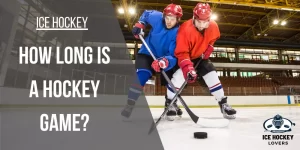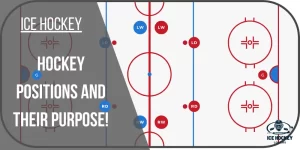High-Sticking Penalty: Rule Details for Hockey’s High-Stick Infraction!
In the exhilarating world of hockey, where speed, skill, and strategy collide on the icy battlefield, a term often heard echoing through the rink is “high-sticking.” As players zip across the ice, their sticks become extensions of their bodies, wielding power and precision. But what exactly is high-sticking, and why does it hold such significance in the game?
This article will delve deep into high-sticking, exploring its definition, penalties, and techniques to minimize the risk of high-sticking incidents.
Table of Contents
What is High-Sticking in Hockey?
In hockey, high-sticking is a penalty when a player’s stick is raised above the average height of the shoulders and makes contact with an opponent. The penalty is designed to protect players from injury. Every player must understand the rules surrounding high sticking to play the game responsibly and avoid unnecessary penalties.
Penalties and Consequences
There are three levels of high-sticking penalties:
- Minor Penalty: This is the most common type of high-sticking penalty. The offending player is sent to the penalty box for two minutes, and their team plays shorthanded.
- Major Penalty: A major penalty is called if the high-sticking is deemed to be intentional or reckless. The offending player is sent to the penalty box for five minutes, and their team is shorthanded for five minutes.
- Match Penalty: A match penalty is the most severe type of high-sticking penalty. It is called if the high-sticking is deemed to be deliberate and results in an injury to the opponent. The offending player is ejected from the game and suspended for at least one game.
Techniques to Minimize High Sticking
Preventing high-sticking incidents requires a combination of skill, awareness, and discipline on the part of the players. Here are some techniques that can help minimize the risk of high sticking:
1. Proper Stick Handling
Mastering stick-handling techniques is essential to minimize the chances of accidental high-sticking. Players should keep their sticks below shoulder level while maintaining control while avoiding dangerous contact with opponents.
2. Body Positioning and Awareness
Maintaining proper body positioning and awareness of opponents’ positions on the ice can significantly reduce the likelihood of high-sticking penalties. By staying alert and adjusting their body positions, players can ensure their sticks remain in safe zones, away from opponents’ heads and faces.
3. Communication and Respect
Effective communication among teammates is vital to prevent high-sticking incidents. Clear, concise instructions and awareness of one another’s presence on the ice can help players avoid accidental collisions or stick contact. Additionally, players should respect their opponents’ personal space and be mindful of their stick’s location.
4. Training and Education
Coaches are crucial in educating players about the risks associated with high sticking and the mitigating techniques. Specific drills and training exercises focusing on stick control and responsible play can significantly reduce high-sticking incidents during games.
Conclusion
In conclusion, high sticking is a significant aspect of ice hockey that requires thorough understanding and attention. By familiarizing themselves with the rules, penalties, safety considerations, and techniques to minimize high sticking, players can contribute to a safer and more competitive environment on the ice. Our goal is to equip you with the knowledge to navigate high-sticking situations confidently and promote a safer playing experience.

Who is Austin Taylor?
Meet Austin Taylor, your go-to source for everything ice hockey! With a passion for the sport that’s as deep as the ice itself, Austin Taylor brings you concise, expert insights and nitty-gritty details on all things hockey. From gear reviews to strategy breakdowns, Austin Taylor is your trusted guide to navigating the exhilarating world of ice hockey. Get ready to lace up your skates and dive into the game with Austin Taylor as your ultimate companion.



